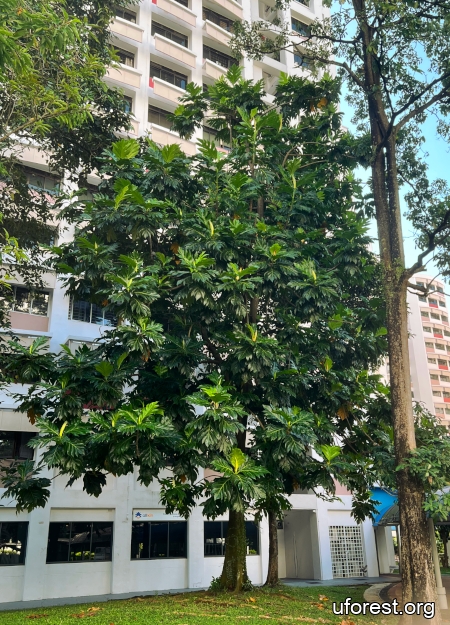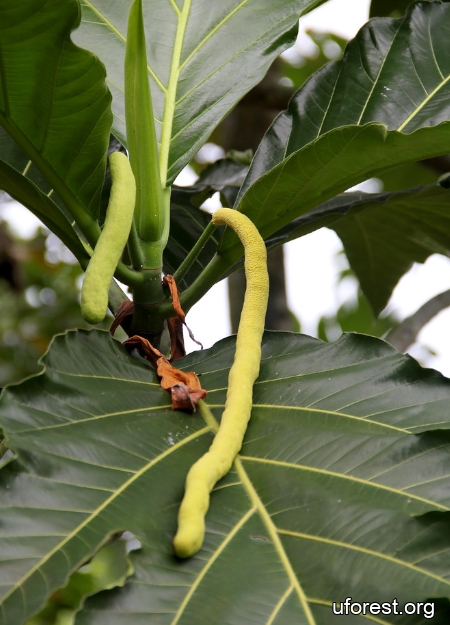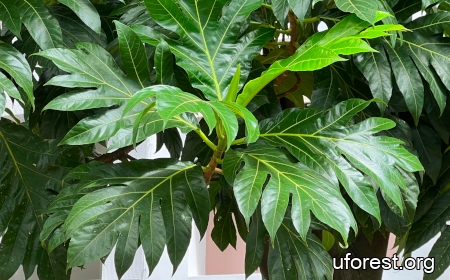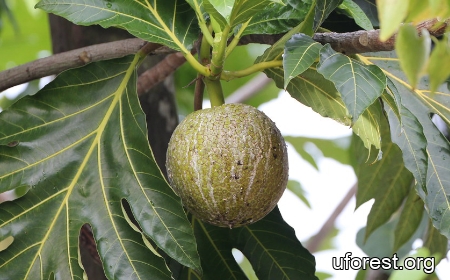Artocarpus altilis (Parkinson) Fosberg
| Etymology | Genus | From Greek, (artos) bread and (carpus) fruit, referring to the iconic Breadfruit Tree |
|---|---|---|
| Species | Fat, probably referring to the fruit. | |
| Family | Moraceae | |
| Synonyms | Sitodium altile Parkinson | |
| Common Names | Breadfruit | |
| Status | Exotic: Cultivated Only | |
| Form | Tree | |
| Native Distribution | Pacific Islands | |
Diagnostics:
A cultivated-only tree up to 30m, Artocarpus altilis can be identified by its large pinnately lobed leaves. They bear male and female flowers on the tips of separate branches. The male flowers are bore on long spikes, while the female flowers are globular.
Interesting Facts:
The Breadfruit used to be cultivated in villages for its edible fruits (Rao & Wee, 1989). This species was domesticated for a few thousand years, with hundreds of cultivars now. Analyses showed that their origins were likely from generations of artificial selection from its wild cousin, Artocarpus amansi, and also hybridisation between A. amansi and A. mariannensis (Zerega et al., 2004).

Cultivated tree in Sengkang (2025)

Elongated male flower spike.

Leaves.

Fruit.
References
Rao, A. N., & Wee, W. C. (1989). Singapore trees. Singapore: Singapore Institute of Biology. 357 pp.
Zerega, N. J. C., Ragone, D., & Motley, T. J. (2004). Complex origins of breadfruit (Artocarpus altilis, Moraceae): Implications for human migrations in Oceania. American Journal of Botany, 91(5), 760–766.
Author: Siyang
Posted: 2025-10-07 / Modified: 2025-10-08